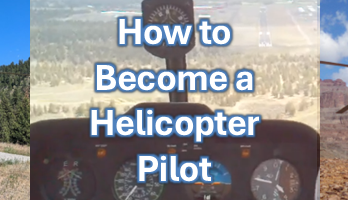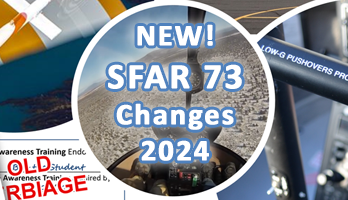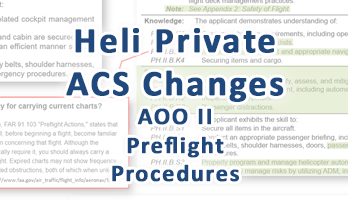This is the thirty second training flight (and final flight before checkride) in a series following a student through his flight training from day 1 to checkride in an R22.
After completing his stage check, we identified a few areas that needed a little bit of work and this was the final flight to ‘polish up’ before his Private Pilot Practical Test (Checkride) with an Examiner. The student took his checkride the next day and passed first time, with flying colors.
Some highlights of this lesson:
- Out of trim during autorotation to shorten glide distance
- Settling with power or vortex ring state
- Simulated engine failure
- Off airport operations
- Slope operations
- Autorotations, straight in and 180
- Hover autos
NOTES/TIPS:
00:30 do a power check at the same hover height each time (about 2-3′ in R22) to compare ‘apples to apples’
01:00 good verbal clearing
01:15 instructor playing more of a role and a check airman on this flight – so letting the student make their own choice and or mistakes…
02:15 use correct phraseology “taking off runway 16…” not “stepping on to”
03:40 discussing compass errors and how to compensate
05:35 compass errors observed in flight
7:15 settling with power or vortex ring state with feedback
10:55 simulated engine failure
11:30 off airport landing with feedback
17:30 don’t stray too far from your intended spot, in case you loose it
18:20 keep an eye out for wind indicators like smoke
19:00 make the approach slow enough, early enough to judge wind and power requirements before too low and committed
21:00 keep some airspeed until closer to the ground, to transition from translational lift to ground effect
21:40 put your tail in the clearing
22:30 demonstration of approach to off airport using correct airspeed to keep performance
23:20 if using carb heat, verbalize to examiner you have up to 1.5″ additional manifold pressure available
25:25 know where to put your tail to keep it safe
27:20 300′ AGL minimum before turning away from the wind (in case of engine failure) and check landing area to make sure no wildfire started by exhaust
29:00 have a plan for traffic pattern entry…
31.20 …and adapt to ‘avoid the flow of fixed wing traffic’ and give way to traffic already in the pattern
34:25 steep approach – don’t hover taxi to your spot – keep the approach going all the way to your spot
36:00 slope operations – way too fast on first attempt
38:30 demonstration of slope (slowly)
39:30 practice holding on one skid & using cyclic to control balance
40:40 ‘taxiway holding position’ line
43:00 straight in autorotation, discussing flare and level heights and don’t forget to make radio calls…
48:25 straight in autorotation – with some S turns
49:30 180 autorotation – forgot to climb more on upwind, so had to make a climbing 360 on the downwind – great job on the auto though
54:20 pull max 5 minute power and aim for around 55 knots for best climb performance
55:25 quick risk assessment of possible runway incursion during autorotation
55:40 180 autorotation – a bit low on RPM – keep flaring
58:00 demonstration of slope operations
59:45 student slope operations & discussion of avoiding dynamic rollover
1:03:40 hover auto, may have not rotated all the way in to the throttle detent, so the correlator may have engaged and pulled the helicopter back up a bit
1:05:00 hover auto second attempt, much better
1:05:50 discussion and demonstration of out of trim in autorotation to shorten glide distance (and slight full down…)
1:09:30 air taxi & quick stop
1:10:35 discussion of out of trim autorotation technique & use of left pedal versus right pedal
1:14:10 hover auto – right pedal must go in as you roll off, not after
1:15:10 hover auto – better
To view all the videos in this series, check out this YouTube playlist of all the Flight Training Sessions (Full-Length Unedited)





